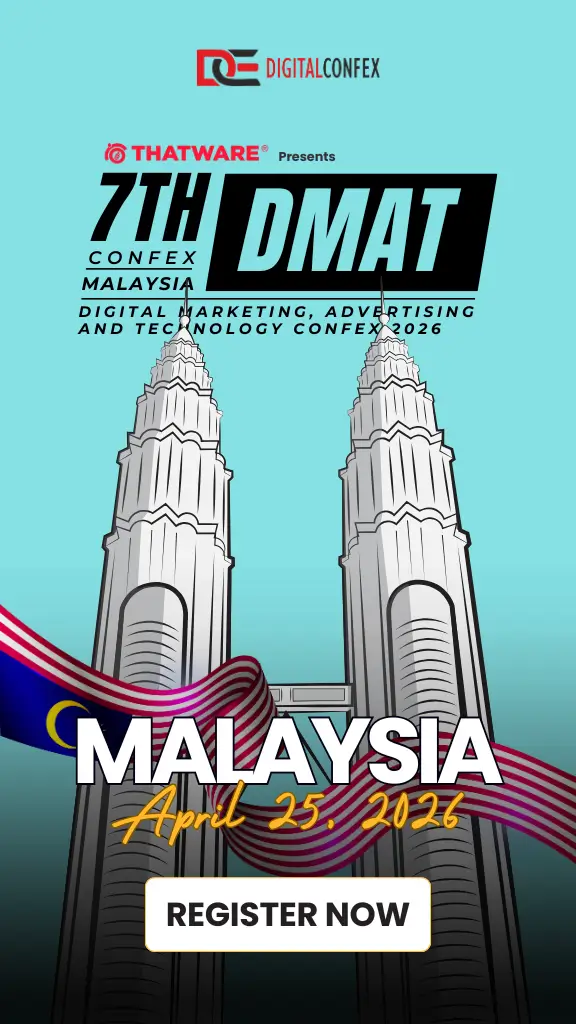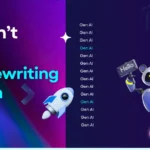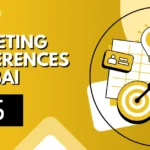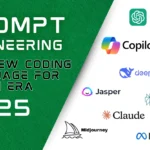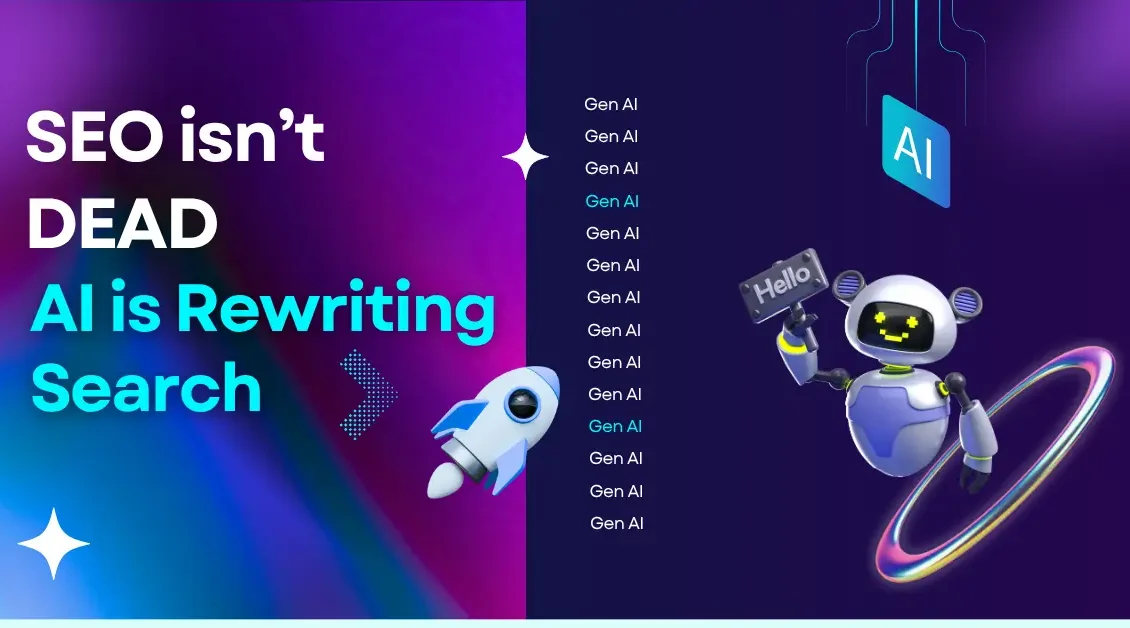
Introduction – From SEO to AIO: The Beginning of a New Search Era
Search as we know it is evolving faster than ever. With Generative AI rewriting the rules of discovery, marketers and brands must rethink what visibility truly means in 2025.
The blue-link era of SEO is fading, and a new frontier is emerging — AI Optimization (AIO).
In this article, we’ll explore how AI-powered search is transforming the digital landscape and how you can future-proof your strategy in the age of intelligent answers.
The Shockwave in Search: How Generative AI Disrupted Traditional SEO
If SEO is dead, who killed it?
The answer — Generative AI.
For decades, SEO revolved around one thing — Google’s blue links.
Rank high, get clicks, build traffic.
But the ground is shifting fast.
AI-powered answers — from Google’s SGE to ChatGPT Browse to Perplexity AI — are reshaping how people search.
We’re moving from searching to conversing.
Yet here’s the truth most won’t tell you —
SEO isn’t dead.
It’s evolving.
And it’s being reborn as something far more intelligent — AI Optimization.
The Evolution of Search: From Links to Language Models
Once upon a time, SEO was simple:
Find keywords. Build backlinks. Wait for rankings.
Then came semantic search — when Google started to understand intent, not just keywords.
Voice queries followed — “Hey Google, what’s the best laptop for editing videos?”
And search engines had to think like humans.
Now, we’re entering the age of AI assistants.
Google SGE gives conversational summaries.
Bing Copilot writes you a paragraph instead of showing 10 links.
ChatGPT and Perplexity AI answer you directly — no scrolling, no hunting.
Users no longer want a list of results.
They want answers. Now.
That shift changes everything.
The Generative AI Takeover: What’s Changing in SERPs
So what exactly is “Generative AI in search”?
It’s when AI doesn’t just find information — it creates the answer for you.
Google’s Search Generative Experience (SGE) summarizes multiple pages into a single response.
Perplexity AI blends discovery with citation-based trust.
ChatGPT Browse now cites live sources and gives contextual summaries.
What does this mean for websites?
👉 Fewer clicks.
👉 More zero-click searches.
👉 AI summaries replacing top results.
A decade ago, getting on Page 1 meant visibility.
Now, the AI summary is Page 1.
Imagine:
Old SERP = 10 blue links.
New SERP = One conversational paragraph — powered by AI.
If your brand isn’t inside that paragraph, you’re invisible.
Why Traditional SEO Strategies Are Losing Power
Here’s the hard truth —
Traditional SEO is losing its grip.
Organic CTR for informational keywords is dropping.
Users don’t click links; they trust summaries.
Even when you rank #1, your content might be buried below an AI-generated answer box.
The focus is no longer on rankings.
It’s on visibility inside AI-generated responses.
And while SEOs once obsessed over E-A-T (Expertise, Authoritativeness, Trustworthiness),
we’re now shifting to AIO — AI Optimization.
Because language models don’t “rank” content — they interpret it.
They look for clarity, credibility, and contextual depth.
So the game has changed.
And it rewards brands that teach the AI what to say — not just those that chase backlinks.
The Rise of AIO (AI Optimization): The New SEO
Welcome to the new battlefield — AIO.
AIO means optimizing your content so AI models understand, trust, and quote you.
How do you do that?
- Structure for clarity.
Write content that’s factual, well-organized, and context-rich.
AI loves structured data and logical flow. - Build trust signals.
Cite credible sources. Include stats, author bios, and expert commentary.
LLMs (large language models) prefer authoritative tone and verifiable data. - Optimize for entities, not just keywords.
Instead of stuffing “best SEO tools,” connect entities like “Ahrefs,” “keyword analysis,” and “backlink intelligence.” - Get mentioned across ecosystems.
Generative AI learns from the web.
The more your brand appears in quality sources, the more likely AI models will “know” you.
This isn’t about tricking algorithms anymore.
It’s about educating AI.
New Metrics for Success in the AI-Driven Search Era
The word “ranking” is becoming outdated.
The new metric?
AI visibility.
Can ChatGPT reference your article?
Does Perplexity cite your brand?
Is your company appearing in Google’s AI summary panel?
That’s the new gold.
Traditional SEO measured backlinks.
Now, AI search measures relevance, credibility, and user engagement.
In this world, engagement signals > backlink signals.
For example:
Perplexity.ai cites websites differently — prioritizing original insights, data, and well-structured answers over keyword-stuffed posts.
Your goal now isn’t to be ranked.
It’s to be referenced.
What Marketers Should Do Now
So how do we adapt to this new reality?
Start by diversifying traffic sources.
Don’t rely only on Google — grow through YouTube, newsletters, podcasts, and social search (TikTok, LinkedIn, Reddit).
Next, make your content AI-friendly.
That means conversational tone, question-based headings, and contextually rich explanations that AI can summarize accurately.
Then, invest in brand building.
AI favors authority.
The stronger your digital footprint — mentions, reviews, citations — the higher your “AI trust score.”
Finally, use AI tools for predictive SEO.
Platforms like MarketMuse, SurferSEO, or Thatware already use AI to predict search intent shifts and generate optimized structures for SGE visibility.
The takeaway?
Don’t fight AI.
Feed it.
The Future: SEO Isn’t Dead — It’s Reinventing Itself
The next evolution isn’t Search vs. Chat.
It’s Search + Chat + Personalization.
Soon, users will have personalized AI engines that remember their context, history, and tone preferences.
That means search results will differ from person to person — not just by keyword, but by behavior.
SEO professionals must now evolve into AI Visibility Strategists.
We’ll still analyze keywords, but through the lens of prompt responses and AI summaries.
We’ll still optimize content, but for machine interpretation, not just crawling.
We’ll still build authority, but across multi-AI ecosystems — not just Google.
And the brands that survive?
They’ll be the ones that understand —
the best way to thrive in AI-driven search is to become part of its dataset.
Conclusion
Generative AI didn’t end SEO.
It ended lazy SEO.
The blue links era is fading, but not our purpose.
The mission remains the same — to help users find better answers.
Only now, we’re serving them through AI intermediaries that think, summarize, and learn.
Marketers who adapt will lead the next decade of visibility.
Those who don’t will vanish behind an AI-generated paragraph.
So no, SEO isn’t dead.
It’s reborn as AI Optimization — AIO.
And that’s where the future of search begins.
Want to Stay Ahead of the Curve?
If you found this article insightful and want to explore more future-ready marketing trends, tools, and AI-driven strategies,
join us at the upcoming 6th Digital Marketing, Advertising & Technology (DMAT) Confex — happening on 11th December 2025 in Dubai.
Here, global experts and innovators share insights that are ahead of the world — helping you master the next era of digital marketing, AI, and brand transformation.
👉 Don’t just follow the change — be part of it.
Learn more and register at DigitalConfex.com


